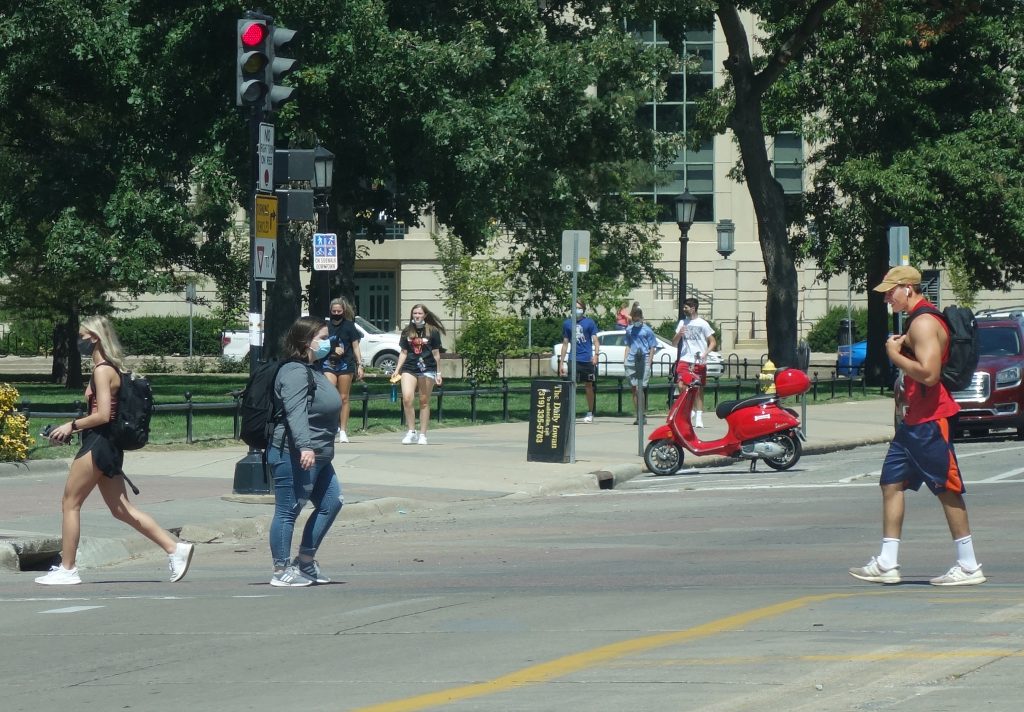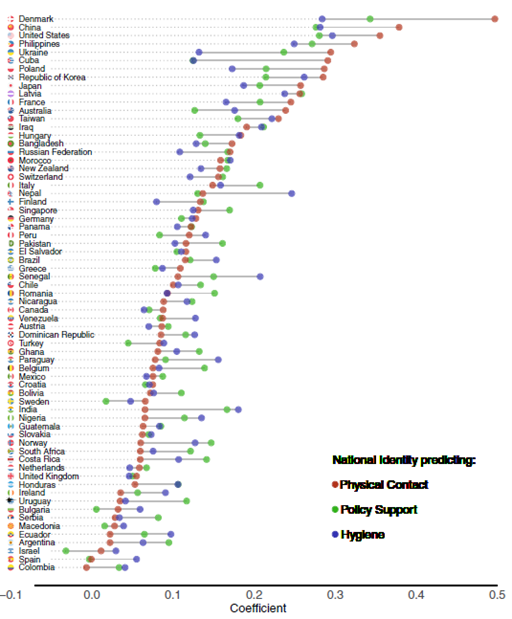5.6 Social Psychology Theories in Action
In this final topic, we want to put some of the social psychology theories into action to help explain (and address) social conflict. We will do this by way of using the social identity theory and social categorisation theory to try explain social conflict during the COVID-19 pandemic.
Especially during the years 2020 and 2021, COVID-19 divided societies around the world. Governments worldwide were engaged in mobilising their populations to collectively comply with public health and social measures to contain the spread of SARS-CoV-2. While many people followed COVID-19 directives and recommendations across the world, a considerable number of people opposed at least some measures (Daoust et al., 2021; Edwards et al., 2021; Powdthavee et al., 2021; Roccato & Russo, 2021).

Some countries appeared to struggle more with social division over health measures than others, and some countries recovered more quickly from this social division than others. For example, in late 2021/early 2022, while in many countries, truck drivers were still blocking roads and people were marching the streets in protest of public health measures (Spence, 2022), the Danes celebrated the end of all COVID-19 restrictions in Denmark (Nuki et al., 2022).
At that time, Denmark was widely praised as the COVID-19 poster child, including for its economic performance, vaccination rate, and social cohesion of its people during the pandemic.
How Social Identities can Help Explain People’s Behaviours
Why may Denmark have been better than others at managing COVID-19 and keeping its people united?
The social identity theory and self-categorisation theory can help explain Denmark’s success and other countries’ struggles during the pandemic. As you learned in the previous topic, these theories propose that in many social situations, people’s behaviours are motivated by their sense of group membership – their “social identities” – rather than by individual reasons (Ellmers & Haslam, 2012; Tajfel & Turner, 1979), which is supported by numerous studies (Haslam, 2014).

In the case of the COVID-19 pandemic, for example, it is less likely that COVID-19 low-risk groups, like teenagers with no underlying health conditions, would have gotten vaccinated, worn masks, and refrained from meeting their friends to contain the spread of the coronavirus if they had acted on personal motivation. It is more likely that these young people complied with COVID-19 measures because they viewed themselves as community members whose duty was to protect weaker members of the same community, like the elderly and people with health risks.
How National Identities May Have Influenced People’s Behaviours During the Pandemic
The social identity theory suggests that people who identify with a group are motivated to act in ways that protect other ingroup members (Kalin & Sambanis, 2018; Kramer & Brewer, 1984). Therefore, if people identify with their national collective, which includes all citizens as ingroup members, they may choose to comply with COVID-19 measures to protect every person in their society.
Indeed, the positive effect of national identity in managing COVID-19 has been shown in recent research undertaken across 67 countries (Van Bavel et al., 2022). The research found that people who identified strongly with their national collective reported increased support for and compliance with COVID-19 measures (Van Bavel et al., 2022). Furthermore, people with stronger national identification reduced their mobility during the pandemic more than others (Van Bavel et al., 2022).
The research also identified Denmark as the country with both the strongest national identity and the highest level of support and compliance with COVID-19 measures (Van Bavel et al., 2022).

Challenges with Social Identities During Times of Crisis
At the onset of a crisis, like the COVID-19 pandemic, a society may initially feel connected based on the perception of a common fate (Abrams et al., 2021; Drury et al., 2016; Drury et al., 2019; Rudert et al., 2021). The perceived threat to self can increase a person’s need for group membership since social identity can help relieve stress and provide people with a sense of security when their self-certainty is challenged (Abrams et al., 2021; Rudert et al., 2021). For example, the experience of mutual threat has been found to strengthen a superordinate social identity such as national identity (Rudert et al., 2021).
However, Abrams et al., (2021) note that over the course of a crisis, superordinate identities are likely to fade, since they may not be effective in permanently satisfying people’s social identity needs for favourable social comparison of the ingroup with an outgroup. This effect is further explained by the optimal distinctiveness theory, which holds that people are averse to being defined “by overly inclusive superordinate categories” (Abrams et al., 2021, p. 202). To fill the social identity gap, people tend to seek membership in more salient subgroups (Abrams et al., 2021).
The fragmentation into subgroups is fostered by the quest for self-esteem enhancement and is likely to be accompanied by various group dynamics that further increase social division (Abrams et al., 2021). During the COVID-19 pandemic, these dynamics comprised polarisation, stereotyping and stigmatising of perceived outgroup members, including “vaxxers” versus “anti-vaxxers”, “mask-wearers” versus “non-mask wearers”, and “distancers” versus “non-distancers” (Abrams et al., 2021; Powdthavee et al., 2021; Prosser et al., 2020; Rosenbaum, 2020; Rozbroj et al., 2019; Wiley et al., 2021). These dynamics have the potential to further alienate and radicalise those groups whose norms differ from those of the greater collective (Abrams et al., 2021; Moghaddam, 2020). To prevent this fragmentation, it is important to create and maintain a strong and salient superordinate identity.
The Role of Leaders in Managing Crisis
National leaders have played a critical role in influencing social cohesion and compliance with COVID-19 measures (Hornsey et al., 2020). Based on the social identity theory and self-categorisation theory, successful leadership during a crisis like the COVID-19 pandemic requires leaders to be able to:
- Foster a strong and inclusive national identity.
- Be perceived as a member of the collective (“we are in this together”).
- Identify and encourage behaviours that are meaningfully related to the national identity (e.g., “as a nation, we can manage the crisis through collective action”) (Abrams et al., 2021; Van Bavel et al., 2020).
During times of crisis, social identities also benefit from leaders who appear strong, decisive and willing to act (Abrams et al., 2021). Mette Frederiksen, who acted as Denmark’s Prime Minister at the time of the COVID-19 pandemic was reportedly quick to “establish a pattern of moving hard and fast – in either direction” (Nuki et al., 2022, February 1). This type of leadership may have strengthened social cohesion in Denmark and people’s compliance with COVID-19 measures.

